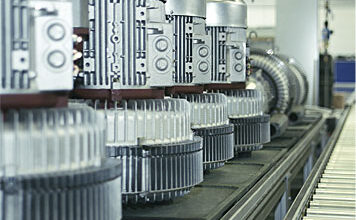From Snapshots to Smart Apps: iPhones Powering Business Innovation
Ever wondered how your iPhone camera could do wonders than just clicking amazing sight pictures? The iPhone cameras has evolved as a powerful tool to empower business innovation. Thus, an iPhone app development company can make the most of this advancement. They can build camera-centric apps that elevate the customer experience, streamline operations, and unlock new revenue streams. In this blog, we will go through the technical details of how these iPhone camera functionalities can be integrated into business-centric apps.
The iPhone Camera’s Arsenal
Apple’s commitment to camera technology is reflected in the ever-increasing capabilities of the iPhone. Here’s a quick look at the key features important for business app development:
High-Resolution Sensors
Advanced iPhones are fitted with high-resolution sensors, capable of capturing top-notch photos and detailed videos. This translates to professional-grade content for product showcases, virtual tours, or high-quality document scanning within business apps.
Multiple Lens Systems
Dual and triple-lens systems offer a variety of focal lengths. This enables apps to capture wide-angle shots, portraits with depth effects, and telephoto close-ups ideal for product demonstrations or detailed inspections.
LiDAR Scanner (on Pro models)
This innovative technology measures depth, enabling apps to create 3D models of objects or spaces. This opens doors for augmented reality applications in areas like furniture placement, industrial design visualization, or immersive product experiences.
Computational Photography
Apple’s image-processing algorithms enhance photos and videos beyond the sensor capabilities. Features like Night mode, Portrait mode, and High Dynamic Range enhance capturing clear visuals in demanding light conditions by business apps.
Camera APIs (Application Programming Interfaces)
These APIs provide programmatic access to the camera’s functionalities within an app. Developers can leverage them for features like custom filters, barcode scanning, real-time object recognition, and more.
At the heart of camera-focused iPhone app development lie the Core ML and AVFoundation frameworks. Core ML empowers on-device machine learning, enabling features like object recognition, scene detection, and real-time image analysis. AVFoundation provides access to the camera hardware and functionalities. Allowing developers to control capture settings, integrate custom camera interfaces and process video streams.
Here’s a glimpse into how these frameworks can be utilized:
Object Recognition & Tracking
Core ML models can be trained to identify specific objects within the camera frame. This can be immensely valuable for apps in retail, where customers can scan product barcodes for instant information or self-checkout. In logistics, packages can be tracked and sorted based on markings recognized by the camera.
Scene Detection & Content Analysis
Apps can leverage scene detection to identify environments like workplaces or specific store locations. This can trigger location-based actions like automated check-ins or personalized marketing messages. Content analysis can be used for identifying damaged goods during quality control inspections. Or even for analyzing traffic flow patterns.
Augmented Reality (AR) Integration
AR overlays virtual elements onto the real world captured by the camera. This has exciting applications in various industries. Imagine furniture companies allowing customers to virtually place furniture models in their homes or construction companies using AR to visualize project plans on-site.
The Keys of Camera Integration
Here are some key technical aspects to consider when integrating camera functionalities into an iPhone app:
- Device Compatibility: Ensure the app supports the camera features available on the targeted iPhone models.
- User Permissions: Requesting camera access at the appropriate time and clearly explaining its purpose builds user trust.
- Privacy & Security: Implement robust security measures to protect captured data, especially when dealing with sensitive information.
- Performance Optimization: Optimize image/video processing to avoid lagging or crashing. Especially when dealing with high-resolution content.
- Battery Consumption: Camera usage can drain battery life. Employ efficient coding practices and user interface design to minimize power consumption.
Instilling Camera-Focused Apps in Businesses
By considering these technical aspects, a mobile app development company in Saudi Arabia, known for its smart takes on the latest technologies can create impactful solutions for various businesses:
Retail
Enhanced Product Discovery
Imagine a furniture store app where customers can scan a room using their iPhone camera. Using object recognition and AR, the app can overlay virtual furniture models onto the live camera feed. Allowing customers to see how different pieces might look in their actual living space. This immersive experience can significantly boost customer engagement and lead to higher purchase decisions.
Self-Service Revolution
Device-based apps can offer customers the ability to perform tasks themselves, saving both time and operational costs. For example, image-based barcode scanning and augmented reality-based self-service checkout streamline customer checkout. Additionally, apps could leverage facial recognition for personalized recommendations or loyalty program integration.
Education
Interactive Learning
AR applications take textbooks and other learning materials to the next level. Learners can point their iPhone cameras at specific pictures or diagrams within textbooks, which then create 3D models, animations, or educational videos to add a new dimension of clarity and engagement, especially with scientific concepts.
Distance Learning & Assessment
For today’s dynamic learning environments, camera-based apps open up the possibility of distance learning. Students could upload assignments or submit assessments using pictures or videos of their work. Students living in distant locations can participate in experiential learning via virtual field trips.
Healthcare
Remote Patient Monitoring
Apps can capture images of wounds or symptoms from patients in case of chronic conditions or post-operative care. This enables remote monitoring for healthcare professionals. Within the app, AI-powered image analysis could provide preliminary insights to allow doctors to prioritize urgent cases and allow for personalized treatment planning.
Improved Medical Records
Integrate camera functionality into electronic health record (EHR) systems. Doctors can capture high-resolution images of lesions, skin conditions, or medical equipment directly within the app. This can enable streamlining documentation and improving the accuracy of medical records.
Manufacturing & Quality Control
Automated Defect Detection
Machine learning models trained on image data can be integrated into iPhone camera apps for automated quality control checks. Production line workers can capture images of manufactured parts using the app. The app can then analyze these images, identify defects such as cracks, misprints, or misalignments, and flag them for further inspection.
AR-powered Training & Maintenance
AR-based training modules within camera-focused apps can simplify complex assembly procedures or equipment maintenance. Technicians can scan specific equipment components with their iPhones, triggering AR overlays that provide step-by-step instructions with highlighted parts and animations. This can significantly reduce training time and improve maintenance accuracy.
Field Service & Maintenance
Remote Diagnostics
Field service technicians can leverage the camera to capture images or videos of malfunctioning equipment. These visuals can be uploaded to the app and transmitted to remote specialists for real-time diagnosis and troubleshooting. This can expedite repairs, reduce client downtimes and improve first-call resolution rates.
Visual Documentation & Reporting
The app can enhance Service reports with photo and video documentation captured directly. Technicians can document completed tasks, identified issues, and final repair conditions. Creating a clear and comprehensive record for both internal reference and client communication.
The Future of Camera-Focused Apps
With the continuous evolution of ML and computer vision, mobile app development companies can further push the limits of camera-centric apps. Integrating LiDAR scanners on the newer iPhone models could allow for advanced depth perception and object recognition capabilities, hence unlocking further possibilities across various industries. iPhone camera technology, together with the expertise of a reputed iPhone app development company, can be a fertile ground for businesses to innovate and further enhance their operations. By leveraging the power of Core ML, AVFoundation, and AR, businesses can create immersive experiences, streamline processes, and gain valuable data insights, all of which drive a competitive edge.



